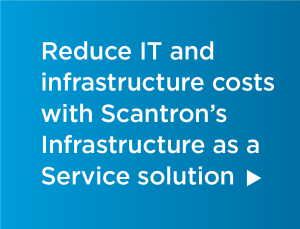Managing IT expenses can be one of the biggest planning headaches a business faces. Should you buy or lease? How will you maintain your servers and other IT hardware? How will you keep these resources safe (from both a physical and cybersecurity perspective)? Can you afford what you really need right now (hardware and staffing)? Can you easily expand or contract resources to meet your current needs?

Capital expenses (Cap-Ex) require you to forecast future needs and manage depreciation for tax purposes, then do it all again when it’s time to upgrade—which seems to happen ever more frequently as technology expands and improves. If the items being purchased are durable (i.e., unlikely to change or get used up rapidly), that can make a lot of sense: you spend the money now, and you don’t have to spend it again for a while. Plus you have to staff up, then install, maintain, and upgrade the hardware yourself.
However, you only really reap the benefits of Cap-Ex if your forecasting is rock-solid. That’s tough to do in today’s dynamic business environment. If you have to scale up or down rapidly, managing IT costs via capital expenditures can handcuff you to solutions that might have been right for you last year, but do not serve you well today.
By contrast, operating expenses (Op-Ex) reflect your current, day-to-day operating needs. Given the rapid rate of computer and operating system obsolescence, the risks of committing to office space to house your IT infrastructure, the dangers of modern cyberattacks, and natural disasters like pandemics, fires, or extreme weather, is it really necessary to buy IT equipment? Is there a nimbler way that migrates costs from complicated capital expenses to simpler operating expenses and offers greater flexibility?
Depending on your needs, there can be: The Cloud.
What does it really mean to be “in the cloud”? To understand that, let’s explore the different types of cloud offerings:
- Software as a Service (SaaS)
This is probably the most familiar type of cloud offering, and it’s been around for years. SaaS offers business applications you don’t have to host, install, or maintain. All you need to do is log in to a website and work. The SaaS provider handles all the infrastructure for that application: data storage, uptime, etc. You just need a desktop or laptop computer and a broadband internet connection. You pay only for what you need right now and don’t have to worry about application updates or maintenance costs. - Platform as a Service (PaaS)
Many organizations subscribe to platform solutions for everything from email to software development engines. PaaS provides the flexibility to scale efforts up or down, streamline workflows more easily, and integrate outside contributors more rapidly. As with SaaS, you just need a computer and an internet connection. You remain in control of (and responsible for) any applications or data that reside on the platform, but pay only for what you need right now and avoid maintenance costs. - Infrastructure as a Service (IaaS)
IaaS applies the basic concepts of SaaS and PaaS to your server and device hardware (even your PCs). It’s like leasing, but without the long-term commitment. While IaaS is still a pay-only-for-what-you-need model, you manage elements like security, updates, and monitoring. However, instead of having to buy (and depreciate) servers, routers, etc. and establish a data center to house them, the housing, physical security, and uptime is managed by the provider.
One of the big advantages to IaaS is the ability to scale up or down as needed. During the 2020 pandemic, many businesses of all sizes downsized either permanently or temporarily—but still had to maintain their servers and PCs regardless of usage. Employing an IaaS such as Microsoft Azure, you can scale IT resources up or down as needed and you only pay for what you use. You can increase or decrease server, data storage, and other network devices at need. You can scale Windows Virtual Desktops up and down and connect to them securely from any device. You can ramp up or down the number of people who access your systems, without having to take a financial hit or calculate complicated depreciation. If that’s not enough, hardware upgrades are tracked and managed for you by the IaaS provider.
And it does not have to be an all-or-nothing proposition—most businesses that use cloud services choose a combination of SaaS, PaaS, and IaaS options. Further, moving to a Op-Ex model can be a staged process or a long-term goal. For example, when evaluating new software, research whether there is a SaaS version available. When looking at the inevitable hardware refreshes, consider whether it may be time to move to IaaS.
Careful planning of when, how, and what servers to migrate to IaaS is a must. The good news is, you don’t have to do it alone. Secur-Serv can help you as we’ve helped thousands of other businesses just like you. Contact us today to start the conversation and let us begin assessing your environment so we can help you determine what cloud options are right for your business.